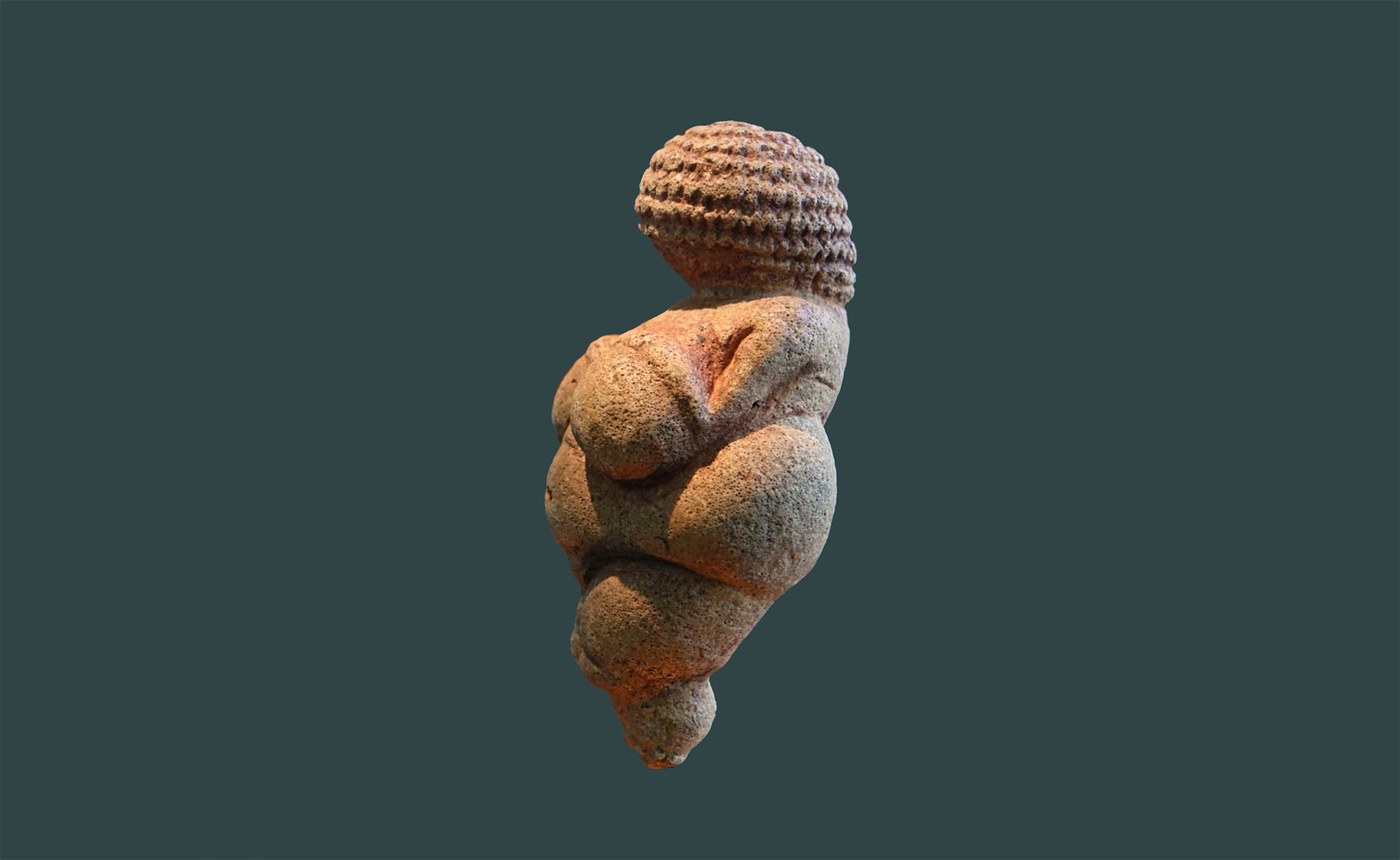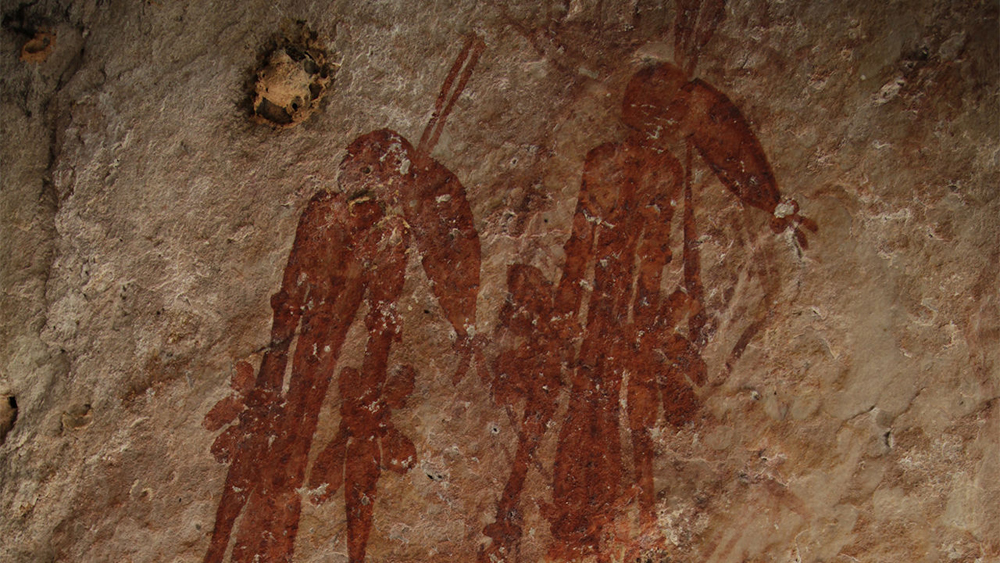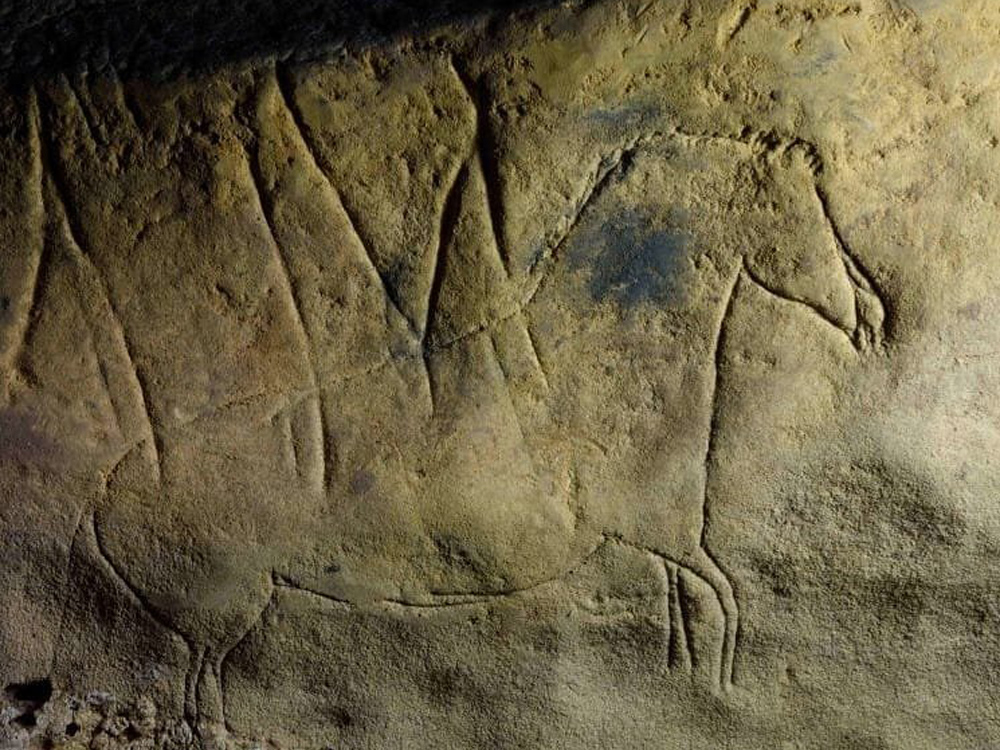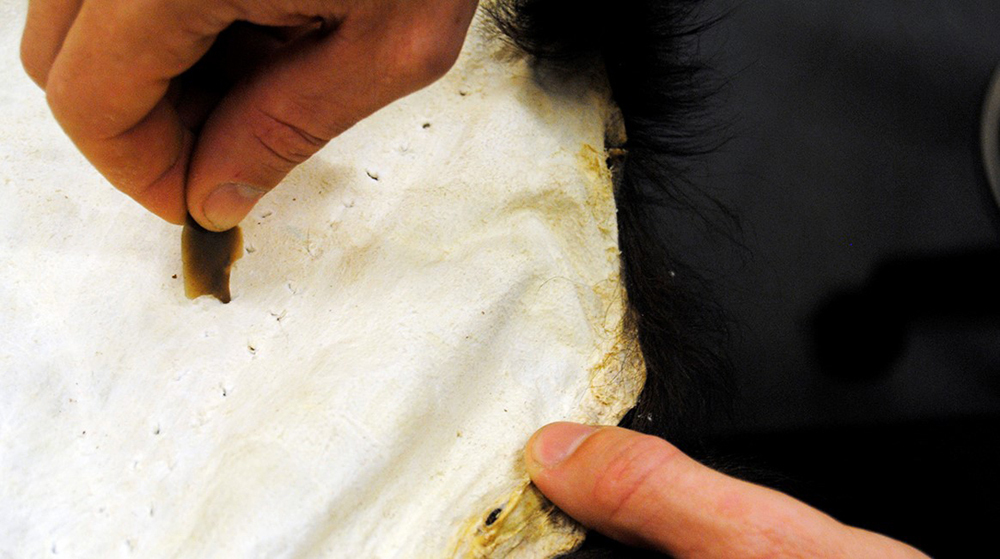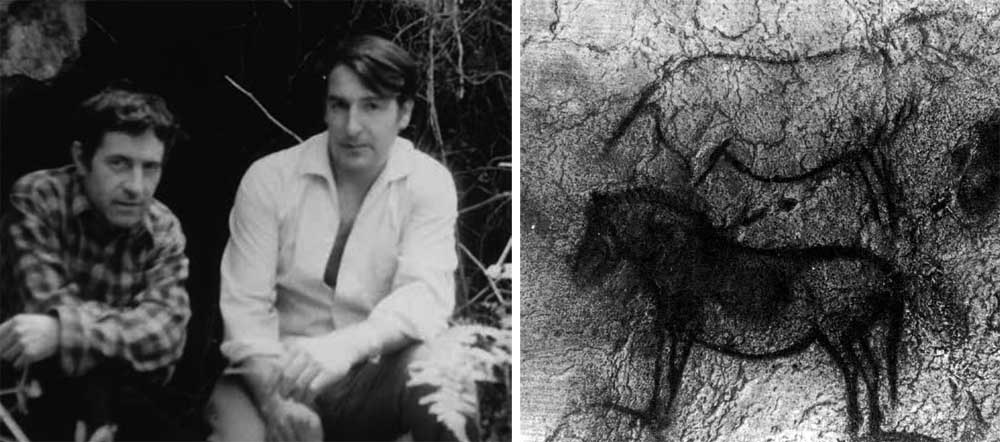Aranzadi asks that the work of the mine located next to the Alkmedio caves be definitively stopped
- The scientific community believes that there are “great opportunities” to find more prehistoric remains in the cave and that the whole area should be protected.

After discovering that the Urdazubi Alkmedio II cave has exposed the engravings, paintings and silex remains of the palaeolithic period, the results of the first study carried out by the interdisciplinary team of Aranzadi were presented to the press on Thursday at the Museum of Navarre in Pamplona, as well as details that we did not know until now.
All 14 engravings and paintings (animals, lines and dots) have been found, as well as more valuable clues related to the art of the cliffs. In a room of 3 km of galleries that had not been studied until now, fragments of silex and coal have been exposed without damage to the earth’s crust, as they remained more than 20,000 years ago.
This discovery has been considered very important by Arazandi, because the Urdazubiko has become one of the caves with the highest resolution to know how the paintings were made and to study the “symbolic attitude” of the European Paleolithic.
The works in the Alkmedio II area are currently paralyzed by order of the Government of Navarre, as reported by the Minister of Culture, Ana Herrera. For Aranzadi, the activity must be definitively canceled, as there are “very big” possibilities to expose more paintings in these 3 kilometer galleries.
Likewise, for the association, the paintings found now would be the oldest in Navarre and these must have the level of protection required by Europe. They explain that mining activity was already beginning to damage the cliffs, as water leaks and industrial sediments have been exposed.
Willendorf (Austria), 1908. At a site in the Wachau Valley, archaeologist Josef Szombathy found a small anthropomorphic statue of a woman about 11 cm, carved in stone and dyed with red ochre.
Since then, it is the best-known venusi of the Paleolithic and has been analyzed from... [+]
1891n nekazari batek Gwion estiloko hainbat labar pintura aurkitu zituen Kimberlyn (Australia).
Font Major kobazuloa (Tarragona, Katalunia) 1853an aurkitu zuten eta urte asko dira bertan arkeologoak lanean ari direla.
Asteartean aurkeztu zuen Bizkaiko Aldundiak paleolitiko 70 pintura eta grabaturen aurkikuntza. Berriatuako Udalak ez du inolako informazio edo berririk izan orain arte.
1992an Shiyan Beicun herritik hurbil, Txinako Zheijang probintzian, herritar batek Longyouko haitzuloak aurkitu zituen. Urez beterik zeuden eta horregatik naturak sorturiko leize nahiz haitzuloak zirela uste izan zen hasieran, baina urez hustu ondoren gizakiak eraikitakoak... [+]
Zergatik arkeologoak orain arte ez dira ohartu bi bisonte erraldoi begira zituztela? Lekeitioko kobazuloaren hormetan aurkituko margolanen xehetasun eta irudi gehiago dakarzkigu hona.








